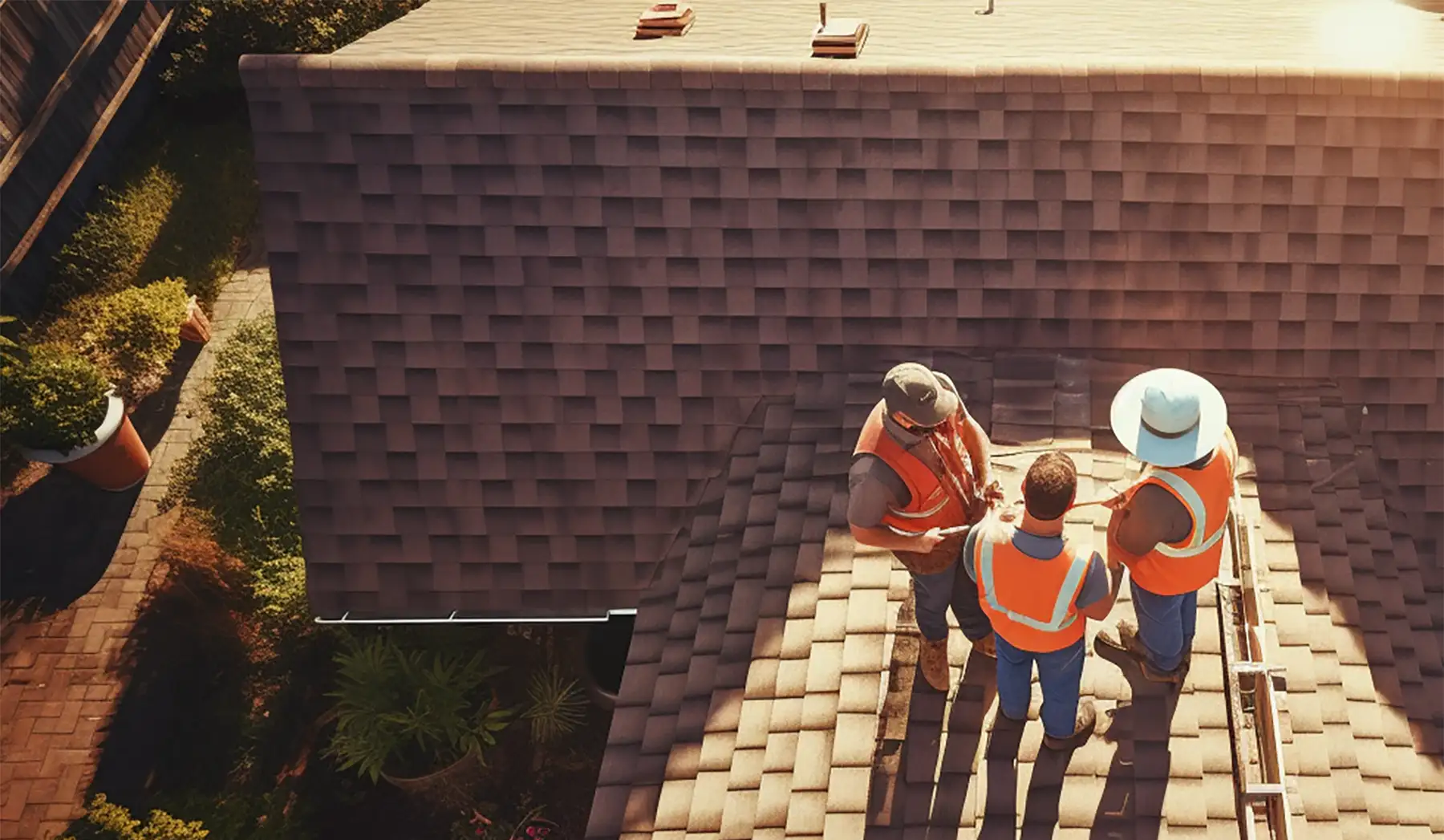Why Your Roof is Discolored
and How to Prevent and Fix It
The meaning behind discoloration could vary from age, damage to improper roof maintenance. If you notice your roof appears discolored, it’s important contact your trusted Tulsa roofing company to identify the issue.
In this article, we will explore why your roof becomes discolored and provide you with preventive measures and solutions to fix it.
Understanding Roof Discoloration
Common Causes of Roof Discoloration
The most common causes of roof discoloration include:
Algae and Moss Growth
Rust Stains and Metal Runoff
Wear and Tear
The Impact of Discoloration on Your Roof's Health

How to Identify Different Types of Roof Discoloration
Algae and Moss Growth
If you notice green or black streaks on your roof, it is likely caused by algae and moss growth. These organisms thrive in damp and shaded areas, especially on roofs located in humid climates. Regularly inspect your roof for any signs of these growths to address the issue promptly.
Algae and moss growth not only affect the appearance of your roof but can also lead to more serious issues. The presence of these organisms can trap moisture, which can then seep into the roofing material and cause damage over time. It is important to remove algae and moss growth as soon as possible to prevent further deterioration. There are several methods to remove algae and moss from your roof, including chemical treatments and manual cleaning. It is essential to follow the manufacturer’s instructions and safety precautions when using any chemical products. If you prefer a more natural approach, you can try using a mixture of water and vinegar or bleach to kill the algae and moss.
Rust Stains and Metal Runoff
If your roof has metal components, such as flashing or gutters, rust stains can develop over time. This can occur due to exposure to moisture or corrosive substances. Additionally, metal runoff from these components can also cause discoloration on nearby areas of your roof.
Rust stains not only detract from the aesthetic appeal of your roof but can also indicate underlying issues with the metal components. Rust can weaken the structural integrity of the affected areas, leading to potential leaks and further damage. It is crucial to address rust stains promptly to prevent these problems from worsening.
To remove rust stains from your roof, you can use a rust remover specifically designed for metal surfaces. Follow the instructions provided by the manufacturer and take necessary safety precautions. It is important to note that removing rust stains may not fix the underlying issue with the metal components. If you suspect damage or deterioration, it is advisable to consult a professional roofer for a thorough inspection and appropriate repairs.
Preventative Measures for Roof Discoloration
Regular Roof Cleaning
One effective preventive measure is to schedule regular roof cleaning. Removing debris, leaves, and other organic matter from your roof’s surface can help prevent the growth of algae, moss, and mold. Not only does regular cleaning enhance the aesthetic appeal of your roof, but it also ensures that there are no hidden issues that could lead to discoloration or damage. It’s also important to keep trees trimmed away from your roof.
When cleaning your roof, it’s important to use appropriate cleaning methods and equipment to avoid damaging your roofing materials. Depending on the type of roof you have, you may need to use gentle cleaning solutions or hire professional roof cleaners who have the expertise and tools to handle the job safely and effectively.
Choosing Resistant Roofing Materials
One effective preventive measure is to schedule regular roof cleaning. Removing debris, leaves, and other organic matter from your roof’s surface can help prevent the growth of algae, moss, and mold. Not only does regular cleaning enhance the aesthetic appeal of your roof, but it also ensures that there are no hidden issues that could lead to discoloration or damage. It’s also important to keep trees trimmed away from your roof.
When cleaning your roof, it’s important to use appropriate cleaning methods and equipment to avoid damaging your roofing materials. Depending on the type of roof you have, you may need to use gentle cleaning solutions or hire professional roof cleaners who have the expertise and tools to handle the job safely and effectively.
Proper Ventilation and Sun Exposure
Ensuring proper ventilation in your attic can help regulate moisture and prevent the growth of mold and mildew. Adequate ventilation allows air to circulate freely, reducing the chances of moisture buildup that can lead to discoloration and damage. In addition to ventilation, allowing your roof to receive adequate sunlight can help dry out damp areas, inhibiting the growth of algae and moss. Sunlight has natural disinfectant properties, and by exposing your roof to sunlight, you create an environment that is less conducive to the growth of discoloration-causing organisms.
By implementing these preventive measures, you can significantly reduce the risk of roof discoloration and ensure that your roof remains in excellent condition for years to come.
How to Fix a Discolored Roof
Free Roof Inspections Give Peace of Mind
Understanding the causes of roof discoloration and implementing preventive measures can help maintain the beauty and integrity of your roof. Regular cleaning, choosing resistant materials, and ensuring proper ventilation and sun exposure are key. In case of existing discoloration, DIY cleaning solutions can be attempted, but professional assistance may be necessary for extensive or stubborn stains. Taking prompt action to prevent and fix roof discoloration will keep your roof looking its best and prolong its lifespan.
If you’ve noticed your roof appears discolored, don’t put it off! Small issues can quickly snowball into thousands in damage when it comes to your roof. To schedule your free roof inspection with Native Roofing – a top-rated roofing contractor in Tulsa, click below.

